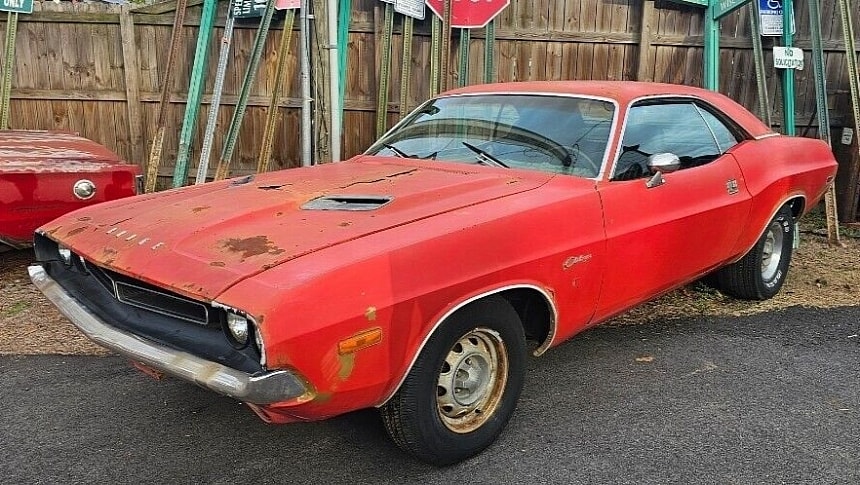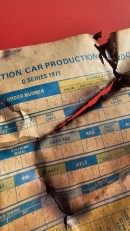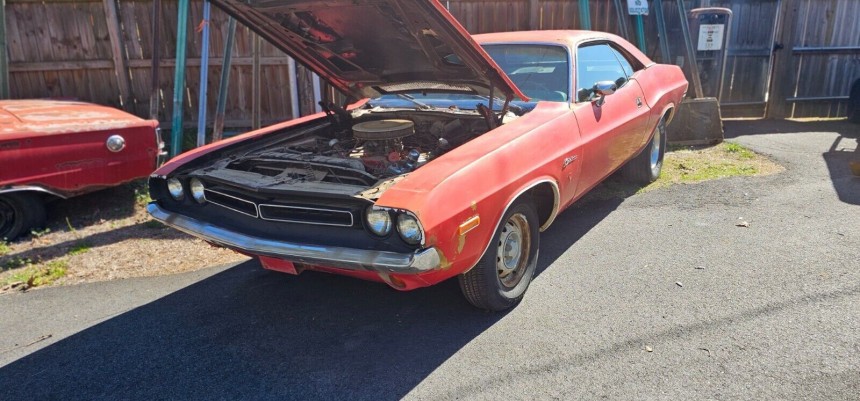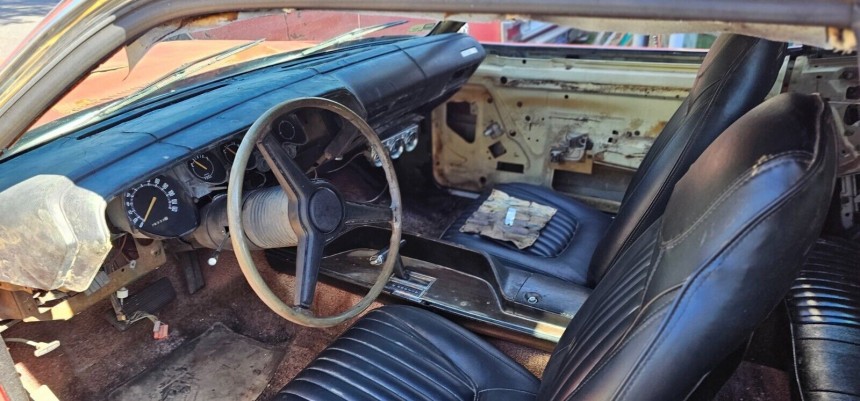More than half a century ago, Dodge was going flat-out toward an ugly revolution that shook the company to its core. In 1970, the Challenger joined the Charger in the muscle line-up, under the ‘pony car’ section, and things looked promising. The Challenger pushed 77,000 units through showrooms – quite a performance, considering the fierce competition, both from within the Mopar family and the other Two Bigs.
In the following year, the disappointment volcano erupted, and the Challenger got a major kick in the kneecap from the buying public. Production records show a 50,000-unit nose-dive for 1971. Granted, the tidal wave was a market-wide event, so it wasn’t just the Mopar that got rear-ended in the money-making sense.
The 318 V8 was the number one option for power that year, so they don’t make the most spectacular of Challengers when one happens to emerge. However, some owners preferred to have a regular 318 car as the base for big-block experiments. Like this car found on eBay, which lost the small-block 5.2-liter V8 along the way and had to make do with a 413 eight-cylinder from yesteryear.
The car is considered a project by its current owner, primarily due to its tendency to catch roots from the period it spent in abandonment without having a periodic maintenance start-up. Apart from the big motor (cast anywhere between 1959 and 1965), another notable feature of this decrepit Dodge is its factory air conditioning.
Strangely, this old Dodge is not for sale but is more of a test probe for the buyer’s interest. The ad on eBay (put online to gather market feedback) states that it will probably require at least new fuel lines and a carburetor rebuild before its first fire-up. The rust is present but hasn’t devastated the car to such an extent that would render it a parts donor.
Unfortunately, at some point in its life, the vehicle got a failed cosmetic treatment that messed up the hood. Somebody wanted a tunnel ram intake /9presumably for the 6.8-liter big-block V8 currently installed, so the engine bay lid got hacked up and welded.
Initially, the Hamtramck assembly line put together this Challenger in gold paint with a white vinyl top and green interior. The seller specifies that the car is solid overall – frame, sheet metal, glass – but he also drops the disappointment bomb. The description of the car’s specs sums up the owner’s intention to simply shake the tree and see how many monkeys fall off before he allegedly attempts to restore it.
With four days left of the bid, the highest offer reached just $11,700 – without meeting the reserve. No Buy It Now option available, ‘just bid if you’re interested.’ So far, 25 proposals have been laid down over the starting $2,500.
Without knowing the engine's production year, we only have speculation about its performance, which ranged between 340 hp for the single four-barrel carb up until 1963 and 360 horses from then on. The 413 was the foundation for the ‘other 426’ of Chrysler, the Max Wedge, and its 426-cube non-HEMI displacement (7.0 liters).
Although not shabby by any standards, the power numbers were drastically unmatched by the torque ratings: 480 lb-ft or 495 lb-ft (651 or 671 Nm), depending on the variant. Original to the car or not, the old lump had the small-block 318 in the bag, as the mingy V8 from 1971 produced 230 gross hp (155 net) and 320 lb-ft (260 SAE net: 434/352 Nm).
The unlikely Mopar has 76,333 miles on its odometer (122,820 km) and isn’t afraid to show either its 53-year wrinkles or the battle-worn not-so-shinning-anymore armor. Out of curiosity, is this car worth rejuvenating as it is, or would a correct motor best do it justice?
The 318 V8 was the number one option for power that year, so they don’t make the most spectacular of Challengers when one happens to emerge. However, some owners preferred to have a regular 318 car as the base for big-block experiments. Like this car found on eBay, which lost the small-block 5.2-liter V8 along the way and had to make do with a 413 eight-cylinder from yesteryear.
The car is considered a project by its current owner, primarily due to its tendency to catch roots from the period it spent in abandonment without having a periodic maintenance start-up. Apart from the big motor (cast anywhere between 1959 and 1965), another notable feature of this decrepit Dodge is its factory air conditioning.
Unfortunately, at some point in its life, the vehicle got a failed cosmetic treatment that messed up the hood. Somebody wanted a tunnel ram intake /9presumably for the 6.8-liter big-block V8 currently installed, so the engine bay lid got hacked up and welded.
Initially, the Hamtramck assembly line put together this Challenger in gold paint with a white vinyl top and green interior. The seller specifies that the car is solid overall – frame, sheet metal, glass – but he also drops the disappointment bomb. The description of the car’s specs sums up the owner’s intention to simply shake the tree and see how many monkeys fall off before he allegedly attempts to restore it.
Without knowing the engine's production year, we only have speculation about its performance, which ranged between 340 hp for the single four-barrel carb up until 1963 and 360 horses from then on. The 413 was the foundation for the ‘other 426’ of Chrysler, the Max Wedge, and its 426-cube non-HEMI displacement (7.0 liters).
Although not shabby by any standards, the power numbers were drastically unmatched by the torque ratings: 480 lb-ft or 495 lb-ft (651 or 671 Nm), depending on the variant. Original to the car or not, the old lump had the small-block 318 in the bag, as the mingy V8 from 1971 produced 230 gross hp (155 net) and 320 lb-ft (260 SAE net: 434/352 Nm).
The unlikely Mopar has 76,333 miles on its odometer (122,820 km) and isn’t afraid to show either its 53-year wrinkles or the battle-worn not-so-shinning-anymore armor. Out of curiosity, is this car worth rejuvenating as it is, or would a correct motor best do it justice?
































